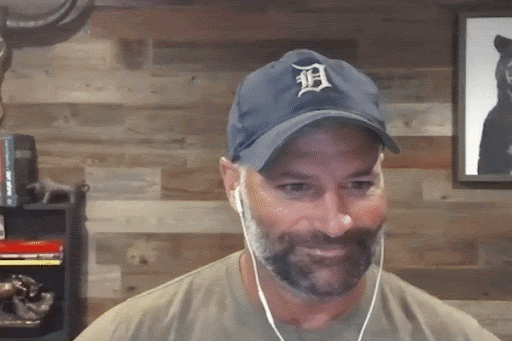Welcome back to the market, Evolvers!
Tomorrow, we’ll continue with our regularly scheduled programming.
But today, I’m continuing to go through the most-asked questions from students.
Options trading can be confusing. There are a wide variety of topics you must understand.
WARNING: Failure to grasp the unique nuances of the options market could potentially lead to a mistake that blows your entire account up!
And after looking over questions from Evolvers, I realized certain questions get asked repeatedly.
So, without further ado, let’s keep the ball rolling and get to round two of the most-asked questions from students.
Keep reading to see my answers…
“How much money do I need to start trading options?”
The answer to this question depends entirely on your net worth and risk tolerance. I can’t give a single dollar amount that’s right for everyone…
However, in general, I think $1,000-$3,000 is a good minimum range for anyone taking trading seriously.
That said, the beautiful thing about options is their ability to potentially leverage your gains … regardless of your account size.
But at the end of the day, choosing the best setups to trade is what matters the most.
And don’t risk more than 10-20% of your account on any one trade!
Incredible gains are possible with options — and you, too, could achieve them (if you work hard and stay disciplined).
“Does the pattern day trading rule (PDT) apply to options traders?”
Yes. The PDT rule applies to any trade — options or otherwise — taking place in an account with a value under $25,000.
We could debate the negatives of the PDT rule until the cows come home…
But since it’s a reality we must live with, I prefer to look for the positives the PDT rule can provide.
Instead of being frustrated that you can’t execute infinite day trades, use the PDT rule as a way to limit yourself from overtrading.
After all, you shouldn’t be trading dozens of times a day. This is a recipe for disaster!
I think that the PDT rule can actually HELP newbie traders to be more selective and conservative with their trading.
I rarely ‘day trade’ by definition. The vast majority of my huge wins are overnight swings that I easily could’ve done without $25,000.
All this to say … Don’t let the PDT rule become an excuse for a lack of results.
“Can you buy and sell options in pre-market or after-hours trading?”
No, options only trade during regular market hours, from 9:30 a.m. to 4 p.m. Monday-Friday.
This can make certain situations tricky when a stock makes a big move in pre-market or after-hours.
I prefer to reduce my overnight risk as much as possible for this reason.
I usually don’t hold options for more than a day or two because the volatile stocks I like to trade can make unpredictable moves during irregular trading hours.
“How do you pick which strike price to trade?”
My choice of strike price depends on the volatility in the underlying stock, the upcoming moves I’m predicting, and the recent price action in the chart.
In general, I’m usually looking to buy contracts that are close to the money, on the money, or slightly OTM (out of the money).
I very rarely buy ITM (in the money) contracts. The risk is lower on ITM contracts, but the rewards are also lower. That doesn’t fit into my strategy very often.
That said, if I had to choose, I’d much rather buy a strike that’s ITM than far OTM.
If you pick a strike that’s too far OTM, you’re setting yourself up for failure. This is especially true with short-dated options. (More on that in a minute.)
Newbie options traders love super-far OTM options. ‘YOLO’ trades tend to appeal to people who haven’t been put through the wringer yet.
Don’t be one of these traders. Instead, pick a strike closer to the money.
The contracts will cost a bit more, but your chances of success will be WAY higher.
“How do you pick which expiration date to trade?”
This is the real key to timing options trades — you MUST pick the correct expiration date.
If you have a firm conviction that the move will happen soon, press your edge and consider buying weekly options.
Weeklies are my go-to contracts because I tend to execute quick one- or two-day trades.
If I’m correct about the price direction, weeklies can return an enormous amount of money based on the capital I’ve invested.
And If I’m wrong, I simply cut my losses quickly and move on to another setup…
But for any trade where you have less than A+ confidence in an immediate move, consider buying longer-dated contracts (one week out or more).
You’ll pay more upfront on the longer contracts, but you’re also buying yourself more time for the stock to realize the move you’re expecting.
“How do you determine whether options contracts are cheap or expensive?”
What you’re asking about is the premium, the amount you pay for the right to hold your options contracts.
Options premiums can get high when the options aren’t very liquid and/or there are no weeklies (only monthly contracts) available.
I tend to stay away from trading high-premium options in this category. The key is to find options with volume…
I look for at least 1000 contracts traded (ideally several thousand) in terms of daily volume.
And most importantly, I look for my favorite chart patterns (supernovas, first red days, blow-off tops, etc.)
Final Thoughts
I hope going through these questions has helped clear some concepts up for you.
Don’t overlook how important the fundamentals are. Great basketball players practice free throws over and over again for a good reason, even if it seems easy.
Remember: You can always refer back to these answers if you’re ever unsure about some of these basic concepts.


